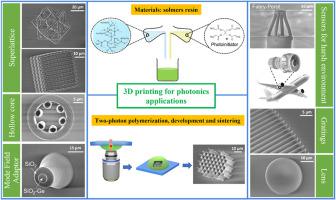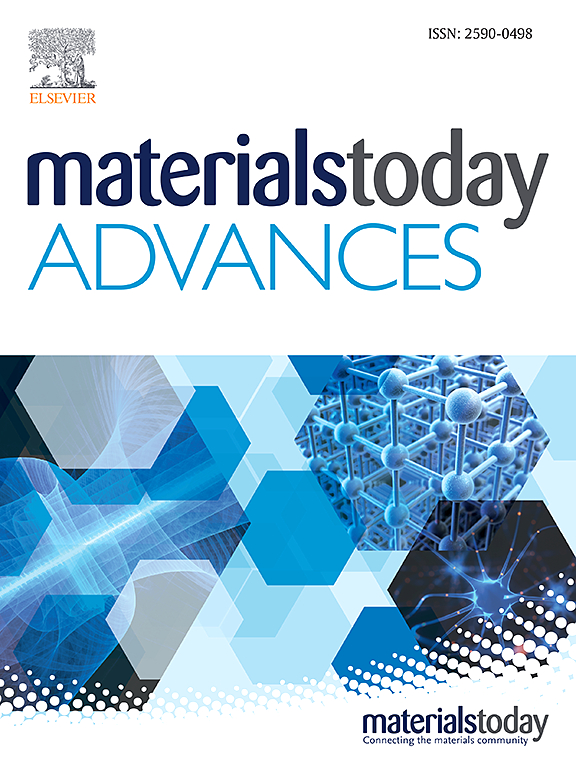Solmers: Versatile hybrid resins for nanometric 3D printing of silica-based photonic components
IF 8
2区 材料科学
Q1 MATERIALS SCIENCE, MULTIDISCIPLINARY
引用次数: 0
Abstract
Owning to their intrinsic properties, silica-based glasses are widely used in various technological fields, especially in photonics. However, high degree of flexibility is yet challenging in realization of next-generation miniaturized optical components. In this work, we develop an approach based on ‶Solmers″ hybrid resins allowing versatile two-photon polymerization 3D printing of silica glasses with 23 nm resolution, doping with Germanium and/or rare-earths elements. Other dopants such as gold nanoparticles were also incorporated for localized metallization. After 3D printing and sintering (1100–1300 °C), high optical quality glasses with low surface roughness (<0.2 nm) were obtained. Structural analyses confirmed the amorphous structure of silica glasses. Various mono- or multi-materials microstructures were successfully fabricated on fused silica substrates. Besides, this approach was extended to the functionalization of optical fibers for optical sensing applications in harsh environment (1000 °C). Compared to organic or organic-inorganic materials, these dense silica-based glasses with enhanced optical and structural properties will open new avenues for the development of emerging advanced optical components.

Solmers:用于硅基光子元件纳米三维打印的多功能混合树脂
硅基玻璃因其固有特性而被广泛应用于各个技术领域,尤其是光子学领域。然而,在实现下一代微型光学元件时,高度灵活性仍是一项挑战。在这项工作中,我们开发了一种基于‶Solmers″混合树脂的方法,可通过掺杂锗和/或稀土元素,以 23 纳米的分辨率对二氧化硅玻璃进行多功能双光子聚合 3D 打印。此外,还加入了金纳米粒子等其他掺杂剂,以实现局部金属化。经过三维打印和烧结(1100-1300 °C),获得了表面粗糙度较低(<0.2 nm)的高质量光学玻璃。结构分析证实了二氧化硅玻璃的无定形结构。在熔融石英基底上成功制备出了各种单材料或多材料微结构。此外,这种方法还扩展到了光纤的功能化,用于恶劣环境(1000 °C)下的光学传感应用。与有机或有机-无机材料相比,这些具有更强光学和结构特性的致密二氧化硅基玻璃将为开发新兴的先进光学元件开辟新的途径。
本文章由计算机程序翻译,如有差异,请以英文原文为准。
求助全文
约1分钟内获得全文
求助全文
来源期刊

Materials Today Advances
MATERIALS SCIENCE, MULTIDISCIPLINARY-
CiteScore
14.30
自引率
2.00%
发文量
116
审稿时长
32 days
期刊介绍:
Materials Today Advances is a multi-disciplinary, open access journal that aims to connect different communities within materials science. It covers all aspects of materials science and related disciplines, including fundamental and applied research. The focus is on studies with broad impact that can cross traditional subject boundaries. The journal welcomes the submissions of articles at the forefront of materials science, advancing the field. It is part of the Materials Today family and offers authors rigorous peer review, rapid decisions, and high visibility.
 求助内容:
求助内容: 应助结果提醒方式:
应助结果提醒方式:


